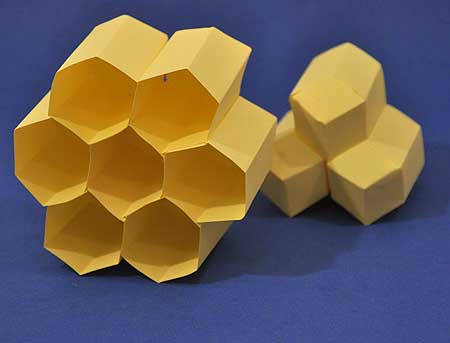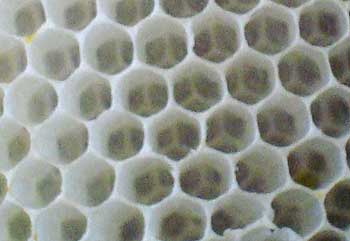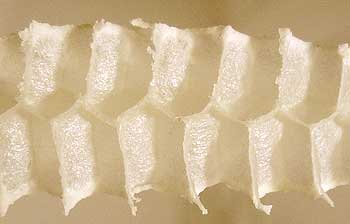Beehive Cells

Bees create arrays of hexagonal cells in a beehive. However, the shape of each cell is not a hexagonal prism as you might expect because the bottoms of the cells are not flat. Bees make two layers of comb back to back. The two layers are offset so that the center of a cell on one side lines up with the point where three cells meet on the other. In this arrangement, the ends of the cells form half of a rhombic dodecahedron!
Steps
- Cut out many copies of the pattern pieces.
- Score, fold, and glue the large piece into a hexagonal tube to form the cell walls.
- Glue the tabs of end cap to the inside of the cell walls.
- Glue the cells together to form a honeycomb.
Notes

 In these photographs you can see how the bottoms of cells in a beehive form
In these photographs you can see how the bottoms of cells in a beehive form - A honeycomb based on hexagons is a very efficient design. A tiling based on regular hexagons divides the plane into equal-area cells with the minimal perimeters. The bees, therefore, minimize the use of wax in the cell walls. The bottoms of the honeycomb are efficient, but not the optimal configuration. A cell bottom shaped like a truncated octahedron has less surface area than one shaped like a rhombic dodecahedron.
Links
- John Baez wrote an interesting blog relating the problem of optimizing honeycombs to the Kelvin problem (dividing space into cells of equal volume and minimal surface area.)
References
Comments
comments powered by Disqus
